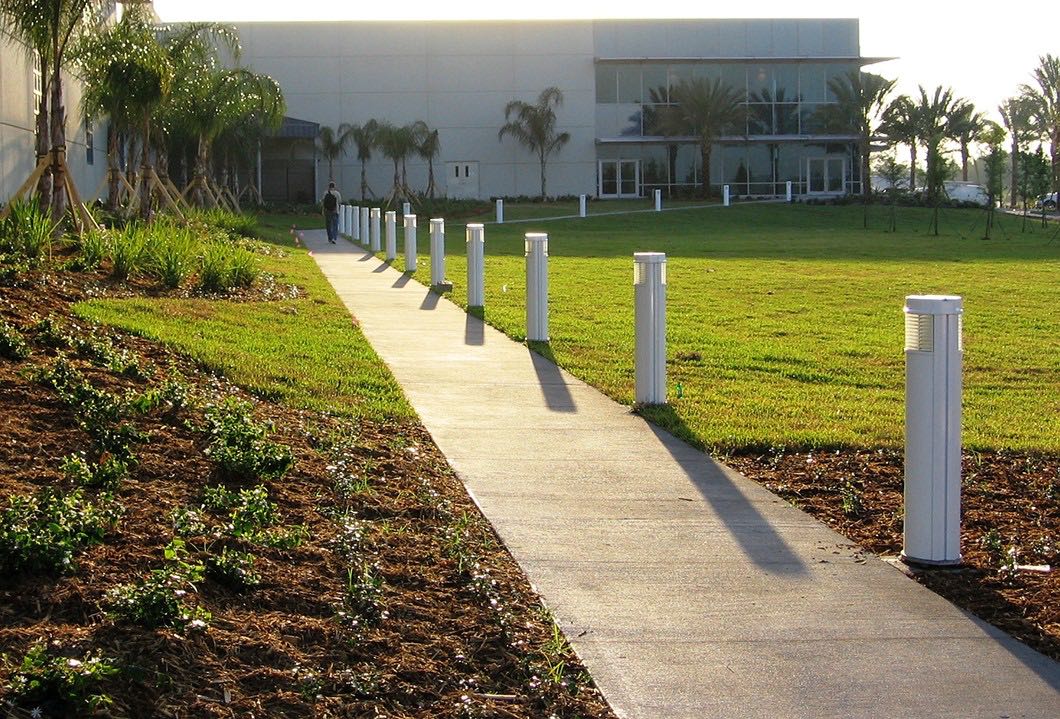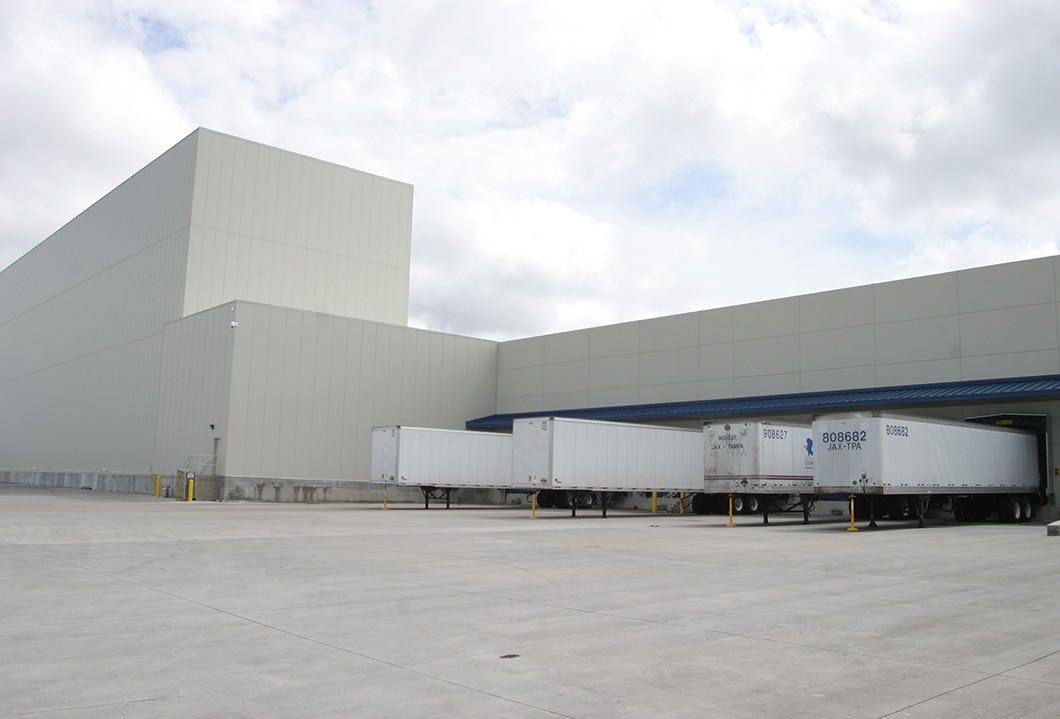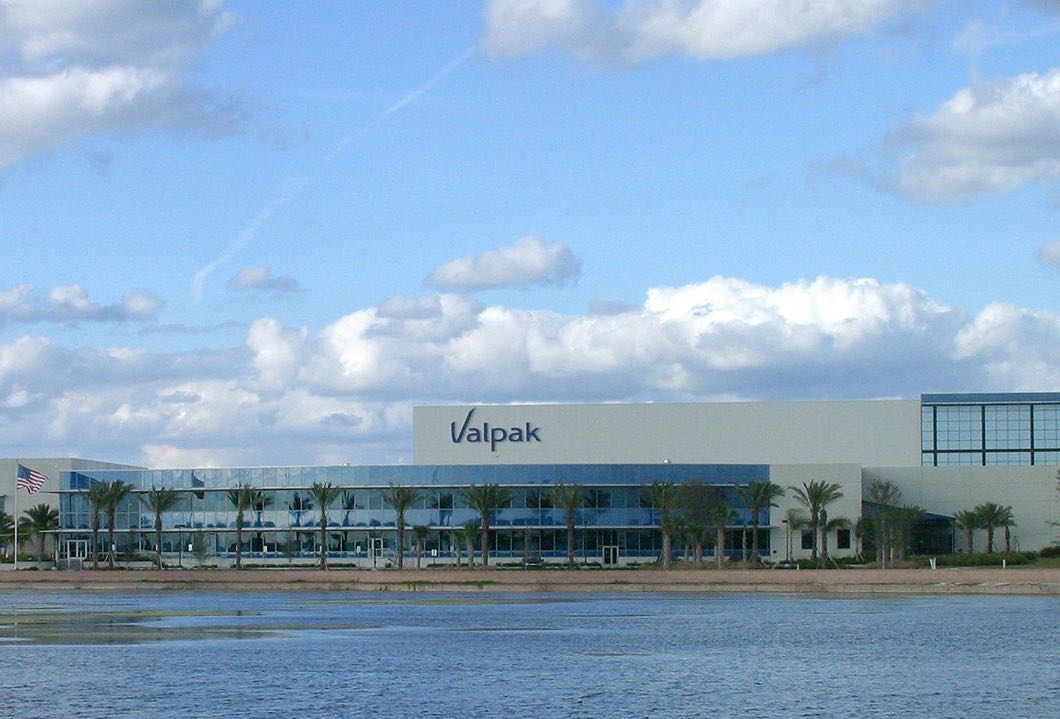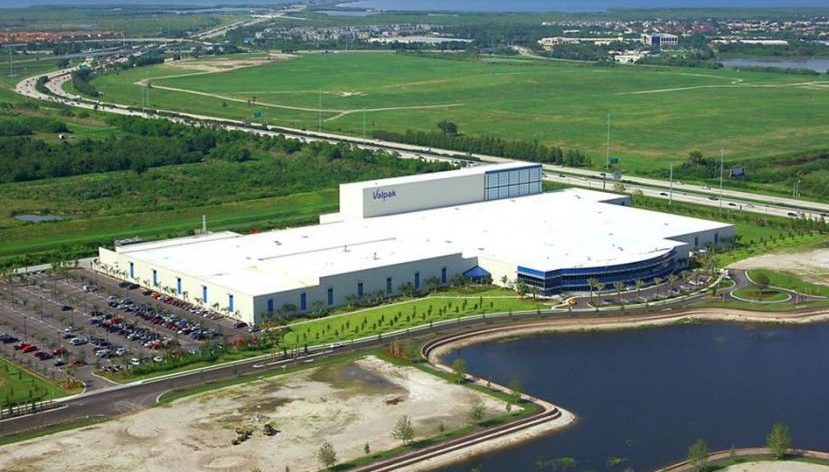Project Overview
Services Provided
- Design-Build.
Location
The Austin Company provided design-build services for a 450,000 SF production facility for Cox Target Media’s (CTM) direct mail marketing system, Valpak.
The new facility consolidated the existing operations located in Largo, Florida, and Elm City, North Carolina. It includes a press area, high bay warehousing, shipping/receiving, a collation area, production support functions, production administration and other small office functions, such as human resources, IT, data center and training. The facility utilizes new technologies and material handling methods that respond to their growing market.
While the client elected to not pursue LEED certification, the project was designed and constructed to standards that were equivalent to full certification.
Extensive back-up power generation systems enable the facility to run for two weeks off-grid, provide instantaneous cutover, and feature small footprint “green” centrifugal fly wheel systems rather than batteries.
CTM is owned by Cox Newspapers, a division of Atlanta-based Cox Enterprises, Inc., the nation’s fifth largest media company with major holdings in newspaper, television, radio, cable and Internet/interactive industries. Valpak is best known for producing direct-mail coupons delivered in blue envelopes, which reaches more than 40-million households.
Cox Target Media selected The Austin Company to provide architecture, engineering and construction for the Valpak Manufacturing Center. When construction began, the first step was to drain and fill a lake on the property, which retains a decorative lagoon opposite the main entrance. Designed to withstand a minimal Category 4 hurricane, the building rests upon a foundation that rises several feet above the region’s 100-year flood plain—a zone in which there is a 1-in-100 chance that flooding will occur in any given year.
As the contractor of record, Austin carefully chose approximately 50 local building service providers to complete the work. To finish the 450,000 SF plant in the project’s relatively short time frame, the building was constructed, completed and equipped in four successive quadrants. As soon as the first quadrant was constructed, it was turned over to Cox to be filled with equipment. Work on the next quadrant was completed shortly thereafter and was then, too, available for equipment. During design and equipment installation in the quadrants, Austin consulted with the partners on a day-to-day basis to help everyone understand the impact of plant engineering decisions on their portion of the work. Construction proceeded in this well-coordinated manner until the plant received its certificate of occupancy.
Initially, because of the height of the racks in the plant area, there was concern from local authorities on how the building would appear from I-275, the freeway that approaches the plant after a scenic sweep across Tampa Bay. These racks, which stand 85-feet tall and house the Automated Storage and Retrieval System, meant that the building would have to be correspondingly tall. But, with the help of some exterior architectural features, Austin assured that the plant would fit properly into St. Petersburg’s industrial landscape.
Austin designed plant spaces and physical accommodations in ways that helped Cox and the partners achieve their networking goals. The Valpak project was “repeat business” for Austin, as the firm has numerous clients in the newspaper and broadcasting industries, including about one dozen dailies and radio stations in the Cox Enterprises media chain.
The Valpak project was similar to many other Austin ventures, as a design-build assignment with most services sourced locally. Because Austin can engage qualified contractors wherever a project is located, the money and the economic benefits stay in that community—a strategy that helps Austin’s clients be good corporate neighbors. This proved to be the case in building the Valpak plant, where contractors from the Tampa-St. Petersburg area provided 95% of all services.
The sheer size of the Valpak assignment and the challenge of building in quadrants prompted Austin to carry out the project in a series of well-planned stages that paralleled the development of a new form of print manufacturing within the very walls it was building.



